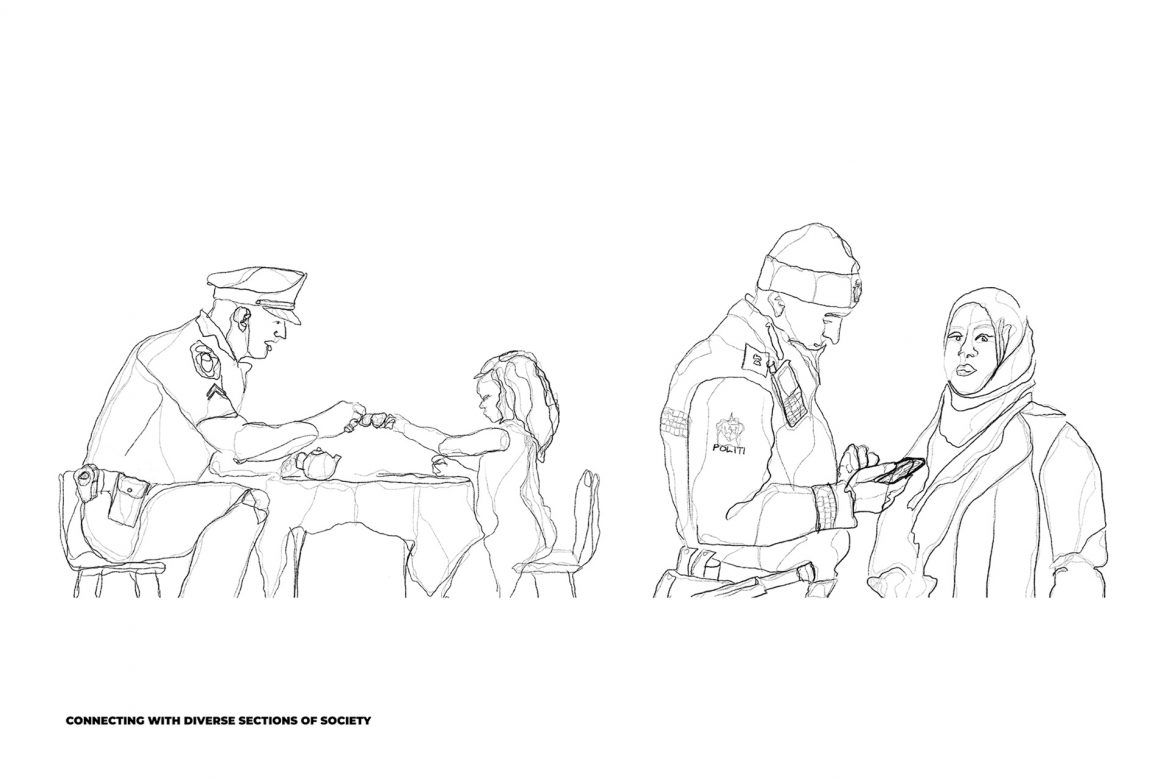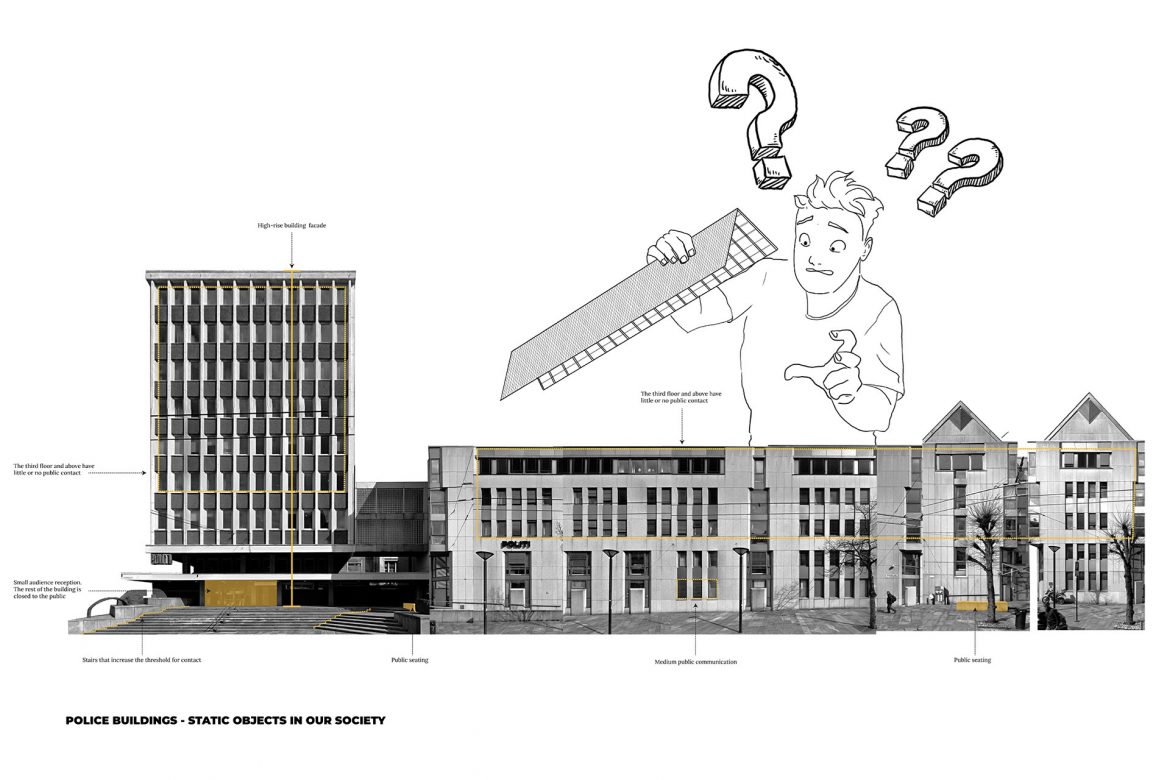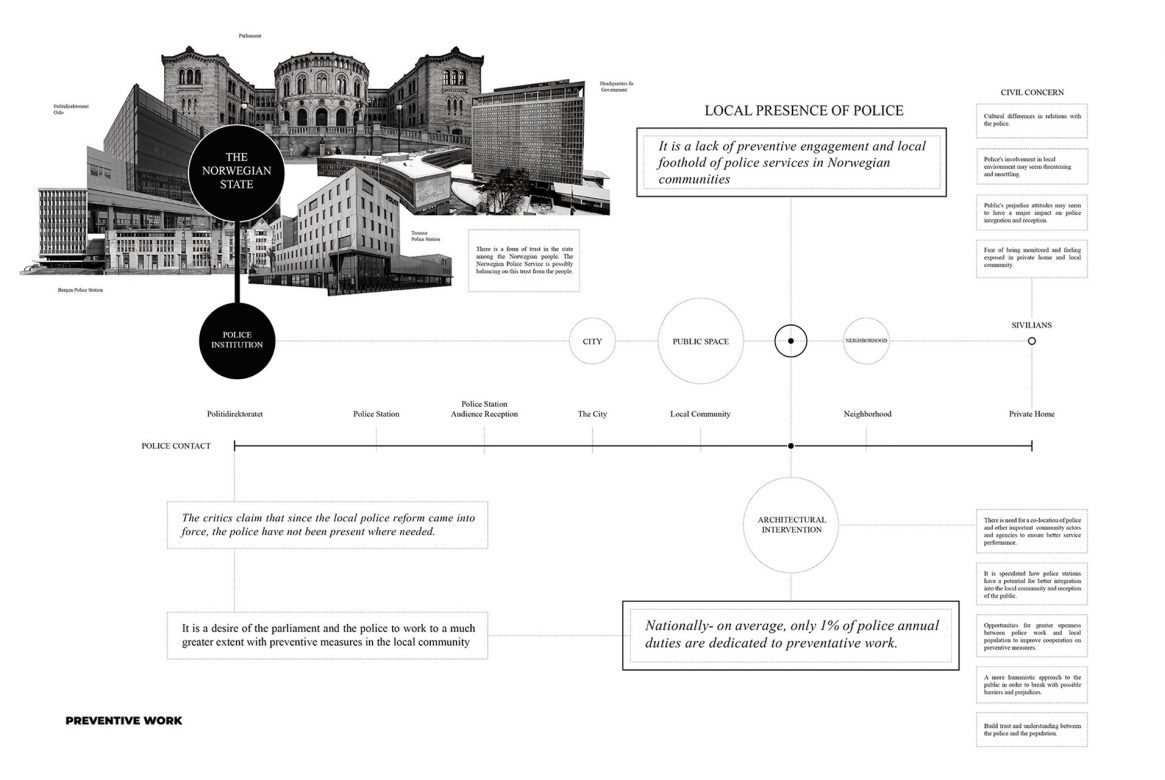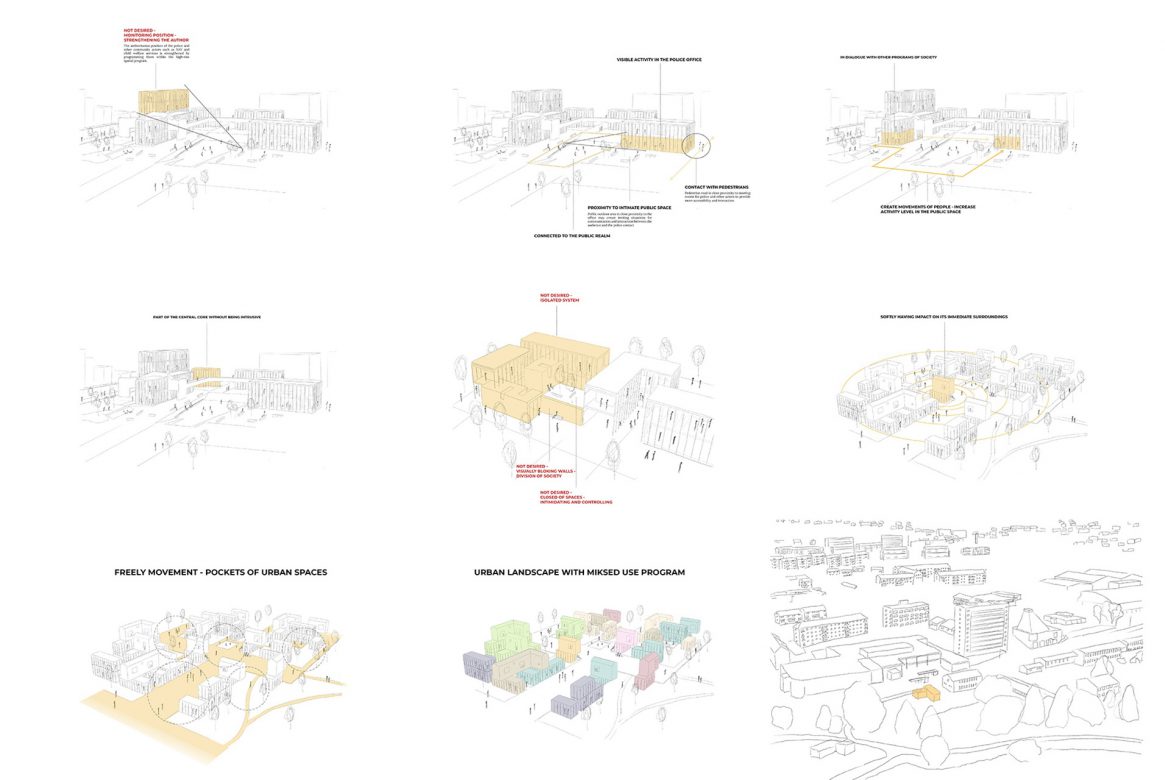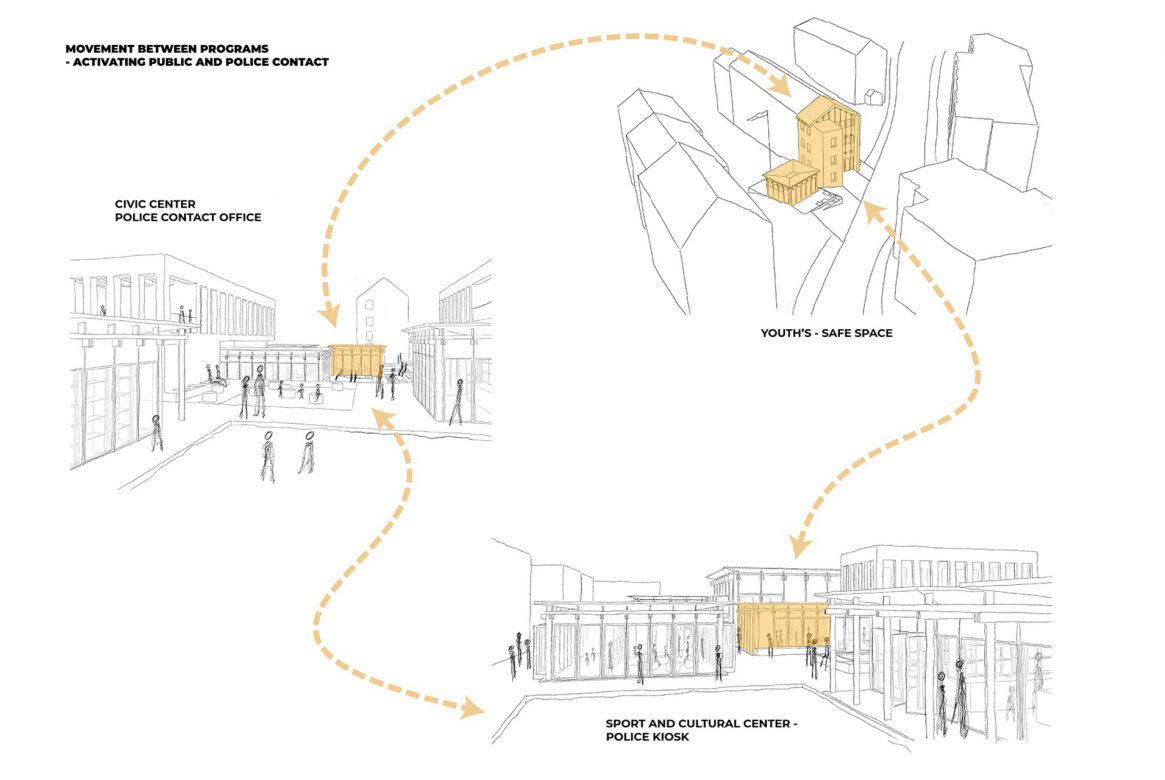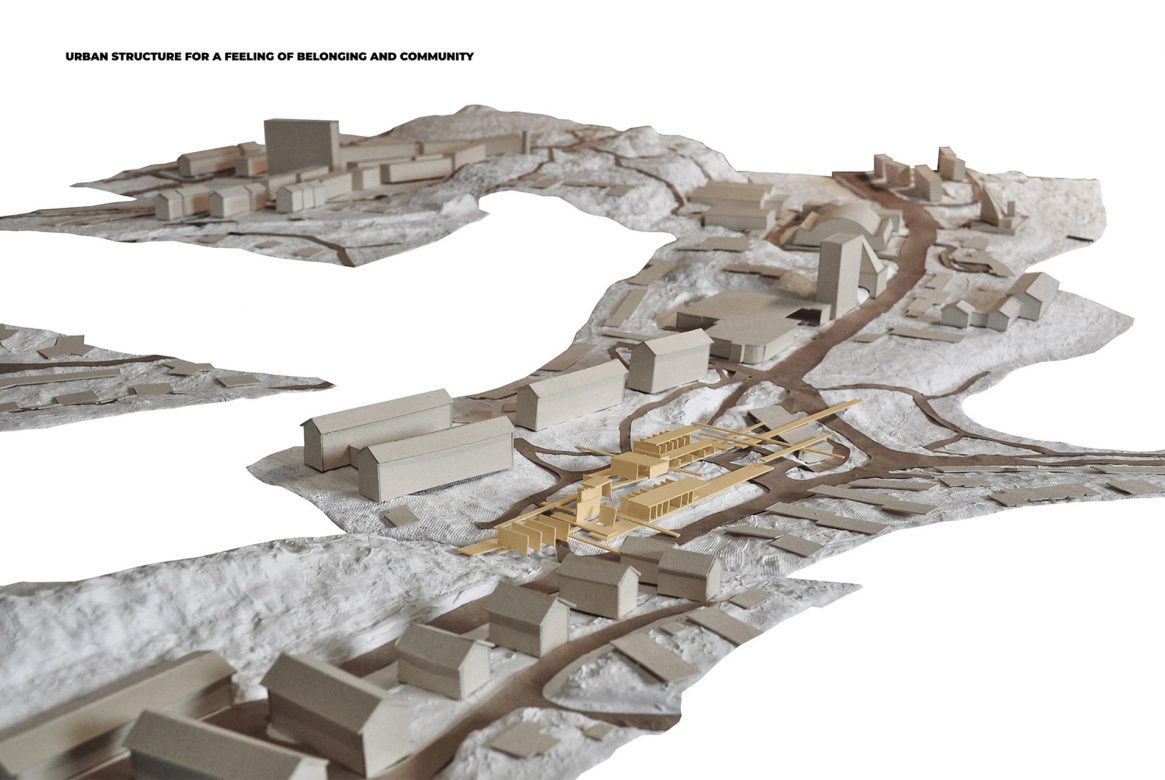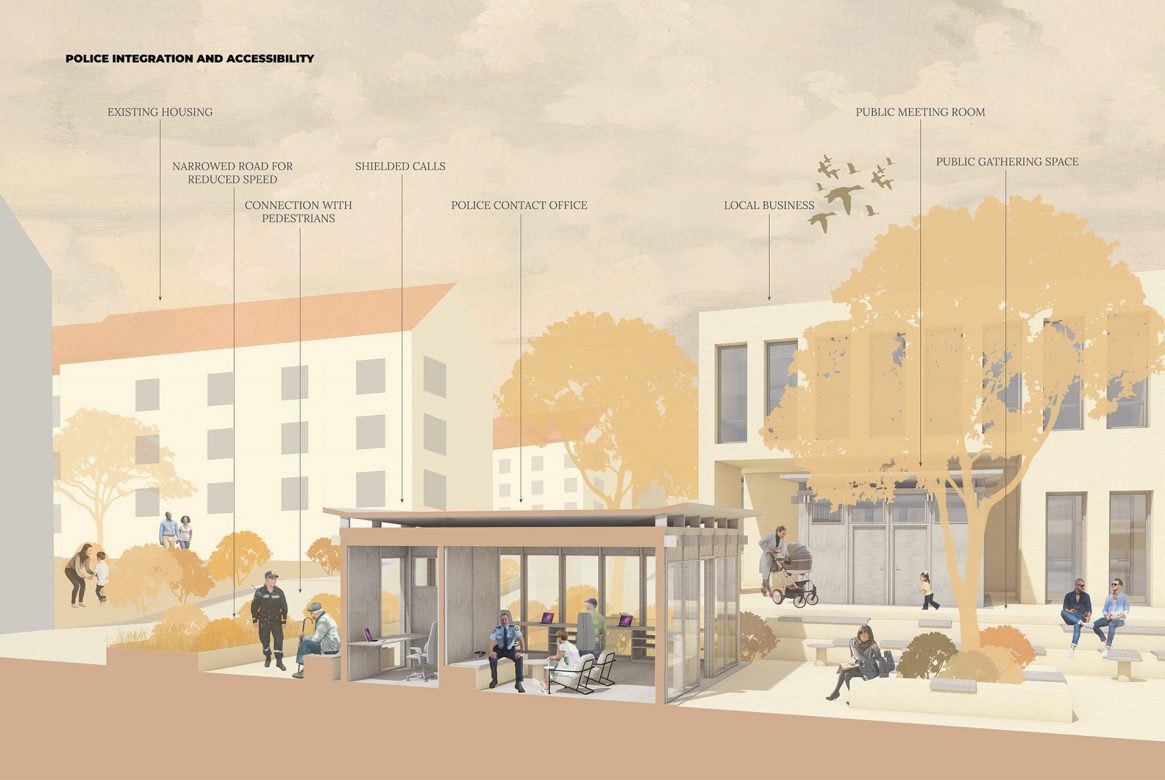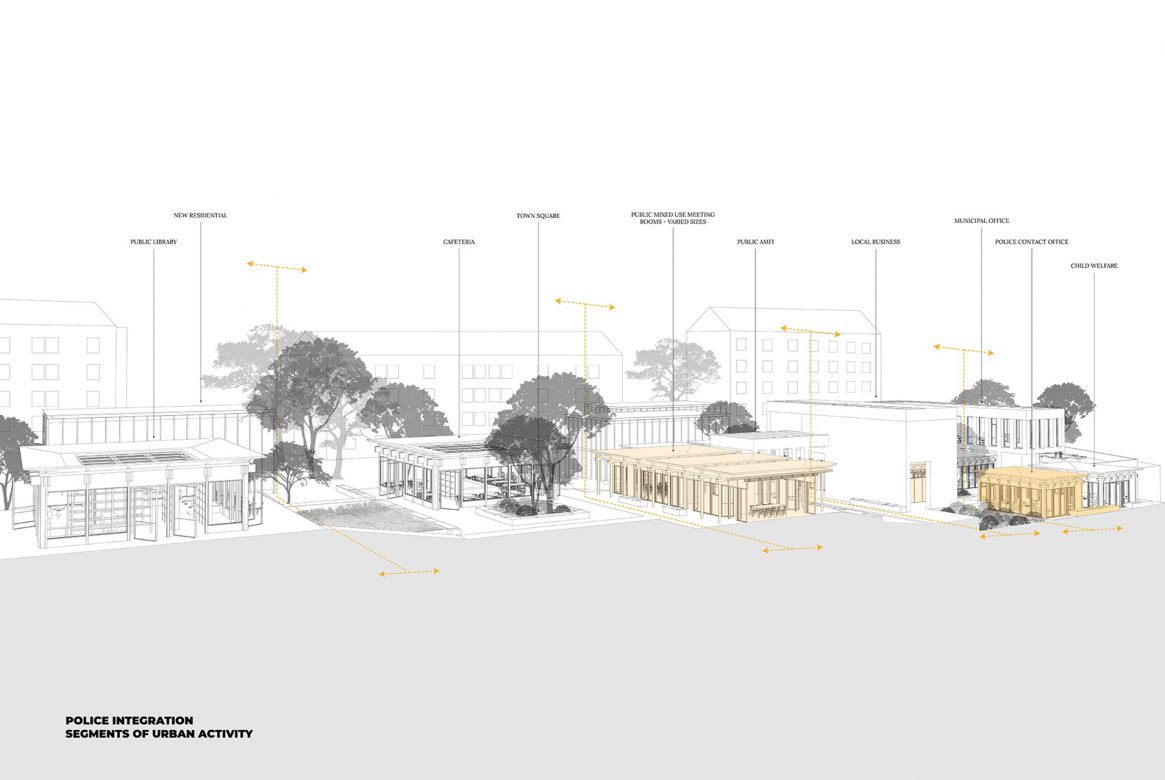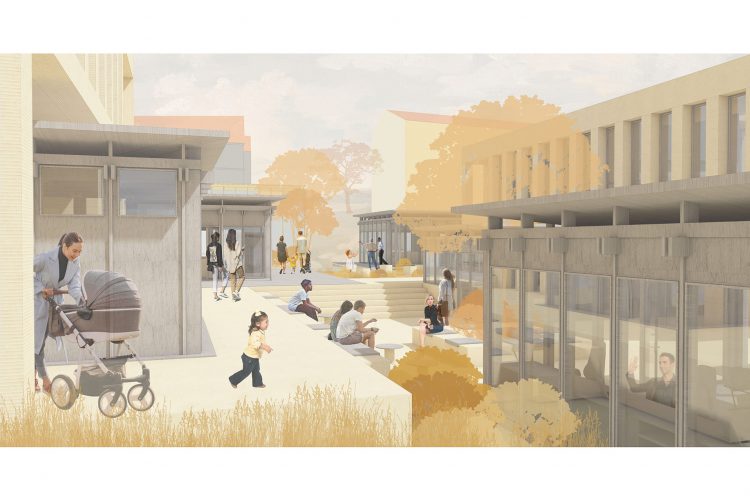
My project works somewhere between classical building design and urban ideas, focusing on spaces between meetings and movements of people within public spaces.
By designing an urban village comprising of several everyday programs including a police contact. In a specific location and in dialogue with the community and the surrounding landscape, I want to break boundaries and thresholds in communication and interaction with the public. I believe dissolving structural ideas of “ordinary” police buildings, and integrating them into the cultural core of the community, may humanize police presence within our society. I believe a humanization of the police is based on the police’s ability to be more accessible, accommodating and to show understanding and empathy for the daily problems of the public. Soft policing might be found with principles of spatial arrangement of accessibility, spaces for communication and the creation of urban activity. To achieve soft policing, I believe that the police work needs to be more focused on a consulting position, solve problems at the lowest level where coercion and consequence are the last choice of result.
My ambition by integrating the police with different collaborating partners such as child welfare, social workers, municipalities, sport clubs, etc, is to create an environment that works purposefully, at an earlier stage, with actions that are proportional to the issues ahead and carried out with the appropriate expertise. With a multidisciplinary environment, better results may be achieved with less intervention. The collaboration may dissolve possible barriers, improve closer connection with the local community, and ensure good local knowledge to strengthen the service performance.
Rather than following the traditional methods of police work, the project proposes new platforms for collaboration, conversation and information, in a contrast to the existing generic architecture of police institutions. The co-location of the police with other collaborating partners and in dialog with the community seems to be a decisive factor in ensuring accessibility. I want to shape spaces that are capable of supporting and adapting to the many progressive reforms of safeguarding the local community, introducing a different typology in contrast to traditional programming of police services and location.
